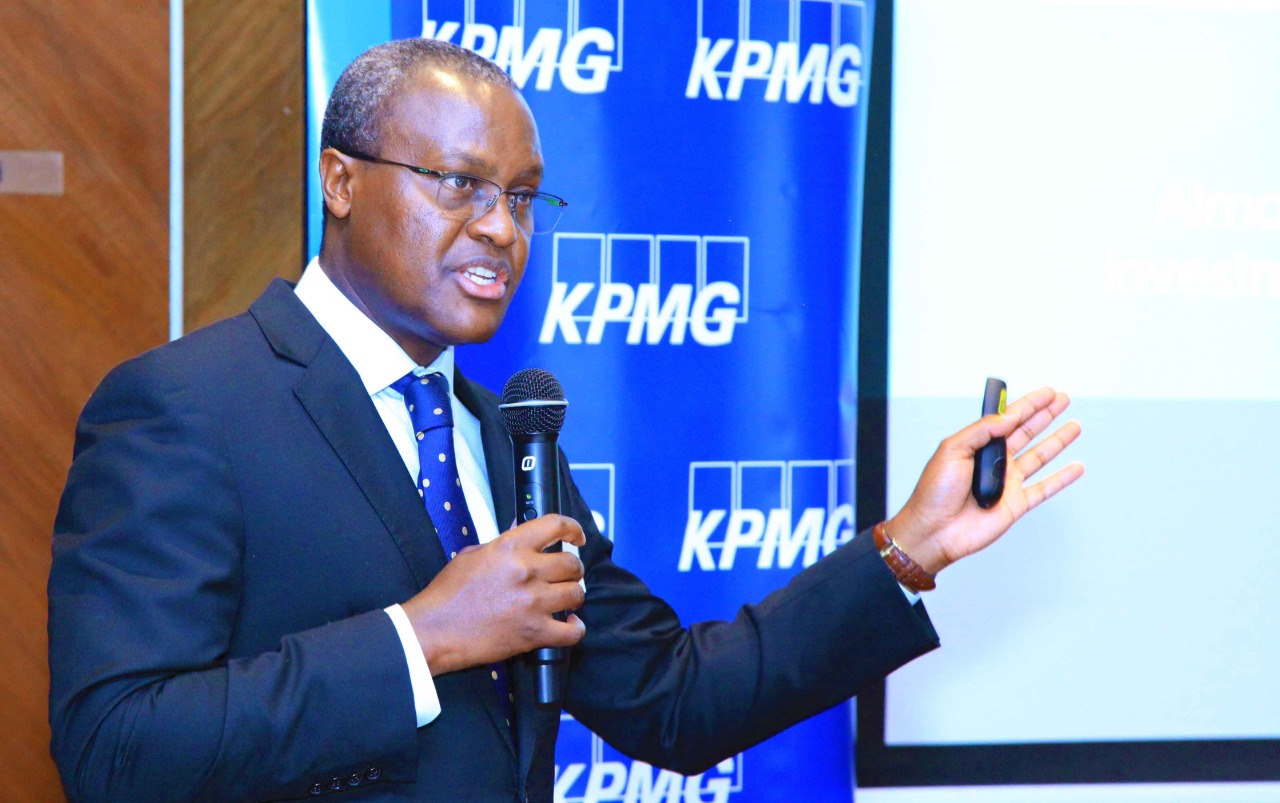advertisement
KPMG launches the Harvey Nash Cio survey 2019 in Nairobi
KPMG has on 25th September 2019, officially launched the Harvey Nash survey in Nairobi, for the East African region. Dubbed…

KPMG has on 25th September 2019, officially launched the Harvey Nash survey in Nairobi, for the East African region.
Dubbed CIO Survey, the event hosted CIOs and CEOs from across the region who took short surveys about the state of technology uptake in their respective organisations and the possible or intended outcome of the adoption.
Speaking at the launch, Gerald Kasimu, the Head of Advisory Services at KPMG Advisory Services Limited, noted that technology is indeed transforming businesses.
advertisement
He said, “Almost half (44%) of organizations expect to change their products and / or services offering or business models fundamentally in the next three years using technology, spear headed by the chief digital officers who are fast overtaking the CIOs.”
Gerald alluded the survey findings that reported two-thirds about 63% of organizations now allowing `business-managed IT’ spend, creating opportunities as well as increasing privacy and security risks where the IT team is not involved. Further noting that fewer CIOs today as compared to two years ago, sit on the board; dropping from 71% to 58% although their influence remains intact at 66%, with their role gaining more influence as compared to 65% in 2018.
The Harvey Nash survey, referred to as the largest IT leadership survey in the world, was started 21 years ago and has hitherto gotten responses from over 3,600 CIOs and technology executives across 108 countries globally.
advertisement
“The survey provides direct insight into the priorities, strategies and careers of senior technology leaders around the world in this digital age,” said Nancy Mosa – Head of IT Advisory Services at KPMG Advisory Services Limited, during her welcome note at the launch.
Nancy challenged CIOs to be able to justify their IT spends, noting that IT budgets have been growing upwards in the last few years.
“IT leaders are reporting budget increases today than at any other time in the last 15 years, but what are they using this for? How are they managing the balance between the huge opportunities that disruptive technologies such as AI bring and the risks of cyber security, data privacy and regulation?” Nancy asked
advertisement
The survey reports that digital leaders work collaboratively with the business to put technology in the hands of value creators, clearly recognizing the power of data acquiring a relentless focus on speed and agility.
Some of the key Findings of the survey include:
- Almost half (44%) of organizations expect to change their product / service offering or business model fundamentally in the next three years
- A third plan to replace more than 20% of roles with AI/automation within 5 years but the majority (69%) believe new job roles will compensate for those lost;
- Almost two-thirds (63%) of organizations now allow `business-managed IT’ spend, creating opportunities as well as increased privacy and security risks where the IT team is not involved
- Skills shortages are at an all-time high with 67% struggling to find the right talent. The top three scarcest skills are big data/analytics, cyber security and AI
- Fewer CIOs now sit on the board – dropping from 71% to 58% in 2 years but CIO influence remains intact (66% see the role gaining influence compared to 65% in 2018)
- The relentless rise of cyber-crime may be levelling out with 32% experiencing a major cyberattack in the last 2 years (33% last year) and confidence in dealing with the threat appears to be improving
- Almost half (44%) have large-scale adoption of Cloud and at least one fifth have at least small-scale implementation of IoT, on-demand platforms, RPA and AI
- First signs of quantum computing – although at a very early stage, 4% have implemented quantum computing to at least some degree.
The survey further reports that Digital Leaders differentiate themselves from the rest by delivering real business results in nearly every measure as a result, growing both revenue and profitability.